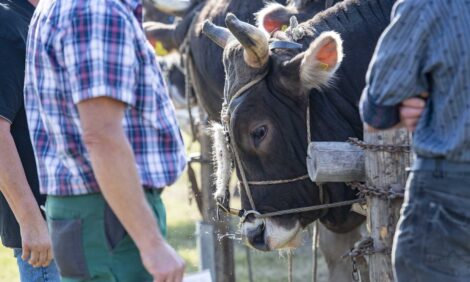



Global Protein Developments: What are the Implications for the Meat Industry?
ANALYSIS - What meat will be on the world's plate in the coming decades? Who will eat what and why? Stewart Lumb went to listen to Rabobank analyst Albert Vernooij.Global protein demand will increase by a factor of 3.5 over a 50 year period, namely from 1980-2030, writes Stuart Lumb.
Poultry will show the biggest increase in demand, followed by eggs, with seafood and beef having the lowest increase in demand.
Countries have different dynamics with regard to protein demand , with this being correlated to individual income.
In Countries with an annual income <$5000 , food is seen as a need. In the BRIC countries ( income $5,000- $15,000 ) food and eating is seen as a social occasion.
In more affluent countries with incomes of $15,000- $40,000, where supermarket shopping is the norm , food is associated with well being.
Finally in countries such as USA & EU ( incomes > $40,000), food is seen as stimulation and there is social responsibility shown with regard to protein consumption, concerns about the environment and also animal welfare.
Meat production from 2010-2020 will increase hugely in China, naturally in the form of pork, although protein production in Asia is very costly as American corn is much cheaper than Chinese corn.
What Can We Expect in the Coming Years?
According to Vemooij, there will be bullish global protein markets supported by ongoing low feed costs.
In 2014 , PEDv outbreaks resulted in surging global pork prices , with drought impacting on the global beef industry.In 2015, all proteins are searching for stability.
Regarding pork, strong supply and weak demand will pressure prices.China has seen a 10 per cent drop in her national pig herd and will look to imports to cover the shortfall, but there are exchange rate implications here.
The weather will continue to dominate the beef supply situation with limited supply from the main exporters namely US, Brazil and Australia.
Changes in the beef industry always take a long time because of the period it takes for cattle to reproduce, relative to poultry and pigs. Re poultry, upbeat margin outlook due to lower feed costs , high beef prices and strong demand in most regions except China.
Avian influenza spread, exchange rate volatility and turmoil in regions such as the Middle East and Eastern Europe impact global trade and shifting trade streams. In the future,India will potentially become a large exporter of buffalo meat.
Industry Developments: Meat Companies
US and Brazilian meat companies dominate, namely Tyson in the US and JBS in Brazil.
The meat industry is under increasing pressure. It must become more efficient and mergers are bound to take place.
Photo courtesy of Shutterstock


